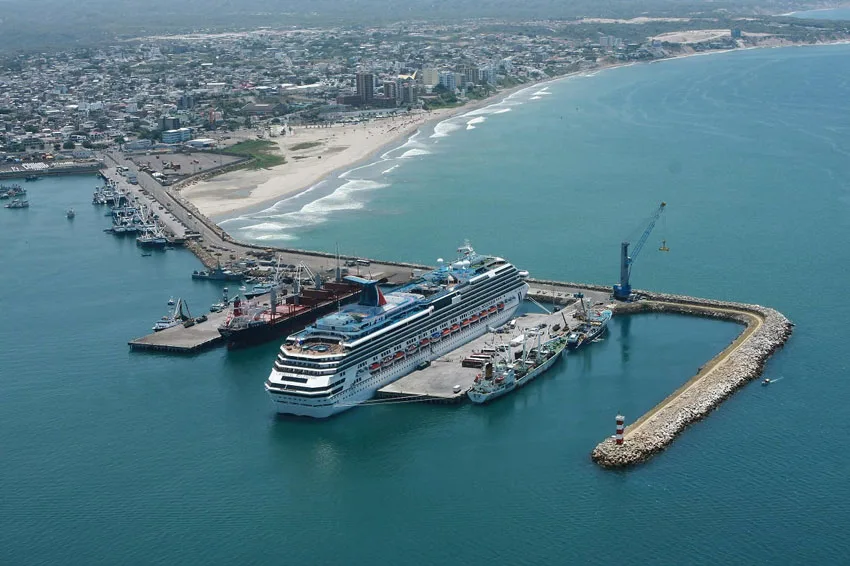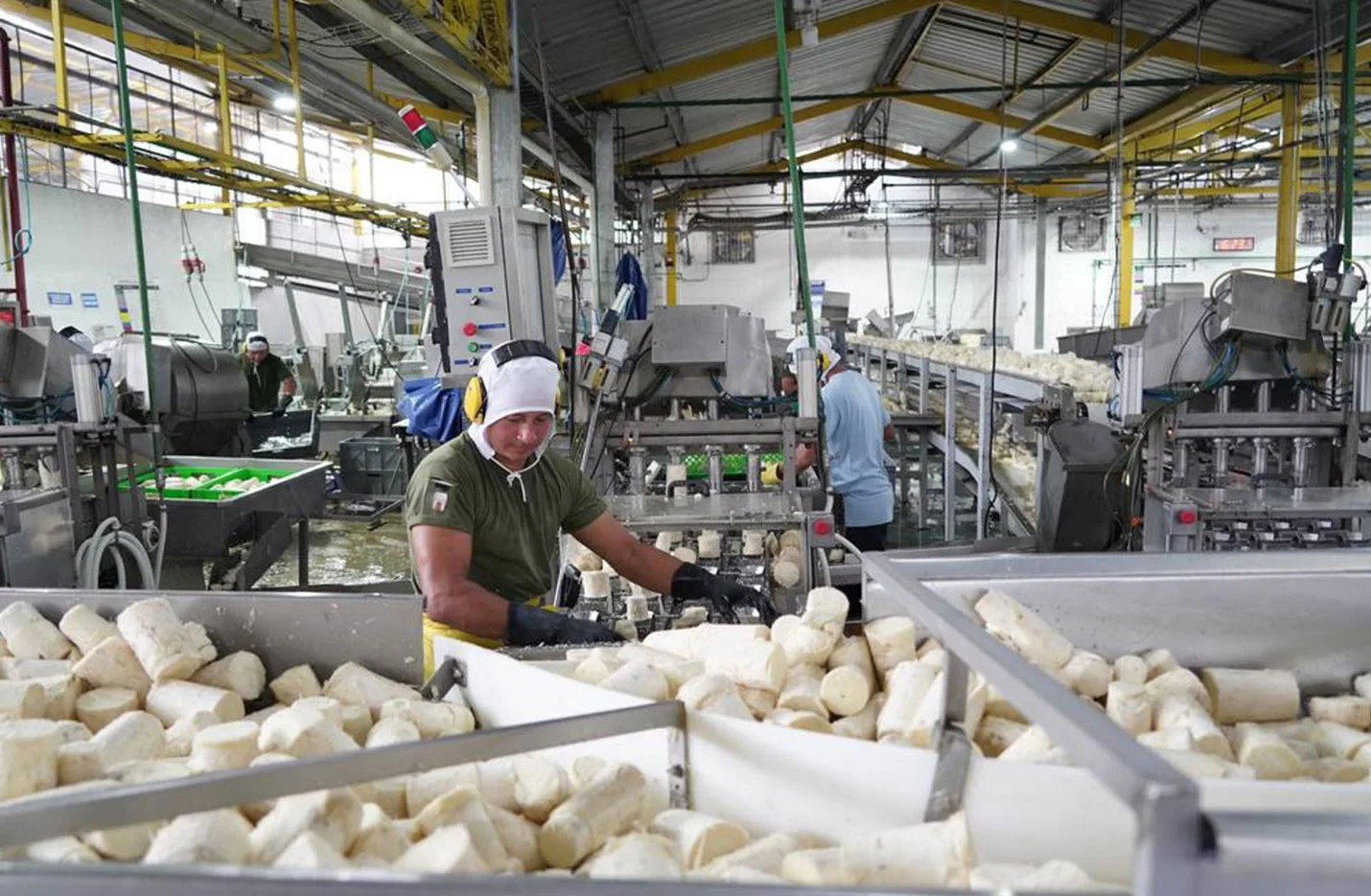One of the world’s largest orchid growing and exporting facilities is only 22 miles from Cuenca
By Liam Higgins
Gualaceo is 36 km (22 miles) from Cuenca, a bus ride that takes 45 minutes and costs less than a dollar. Known as “El Jardin del Azuay,” Gualaceo has a population of just under 50,000. Its tourist information center is next to a suspension bridge over the Rio Santa Barbara; Plaza Calvary is the highest viewpoint in town. It boasts the Lopez Adab Archaeological Museum, the Feria de Cuyes Asados at the Mercado 25 de Junio, a drink made of corn flour with tropical fruit called rosero, a go-kart track and paintball field, a water park, and the typical non-stop string of fiestas and celebrations.

José Portilla, president of Ecuagenera, checks plants in a green house. Photo credit: El Tiempo
But most importantly, Gualaceo is known for its world-class — some say the largest — orchid operation, Ecuagenera. Situated just west of town, Ecuagenera was founded in the 1950s by Angel Andreetta, an Italian-born priest who arrived to set up a Salesian mission. As a hobby, he began researching and collecting orchid species he found in the area. Thanks to his work, in 1968 Ecuador participated for the first time in a world exhibition of orchids in Colombia. A young Gualaceño, Mario Portilla, assisted Father Andreeta in his orchid avocation and in 1991, Mario’s younger brother, Jose “Pepe” Portilla, launched his own orchid career with such enthusiasm that a year later, Géneros Ecuagenera was founded by the Portilla brothers, with Andreeta as the adviser.
“Father Andreeta was most interested in conservation and investigation, but to do this, we had to set up a business,” explains Pepe Portilla, whose four years in the restaurant business in New York account for his excellent English. “It’s not like in the States. In Ecuador, no one gives you money for research. Instead, you have to sell plants.”
Thanks to the Portilla brothers’ efforts, in 1993, Ecuagenera became the first Ecuadorian company to obtain legal permission to export orchids. Today, it’s Ecuador’s largest exporter of this prolific plant.
The orchid family is believed to be the world’s largest family of flowering plants, with nearly 900 genera (the most famous of which is vanilla), 22,000-26,000 species, and more than 100,000 hybrids and cultivars. Some orchids can flower six, seven, up to eight months a year; others take five, six, up to ten years to produce their first flowers. Some are fragrant, with such familiar scents as citrus, raspberry, coconut, and lilac. Others carry fragrances that defy description. Still others have no scent, relying on shape and color to attract pollinating birds and insects. If cultivated with care, most orchids are virtually immortal. According to the Royal Horticultural Society, orchids imported into England in the 1800s are still alive today.
Ecuador is among the world’s most orchid-rich countries. According to Pepe Portilla, Ecuador has 4,200 species, many of which are endangered. “Ecuagenera is credited with describing one thousand species,” he says, “but we will get to seven thousand, once we describe all the species in Ecuador. By comparison, the United States has one hundred and thirty species of orchids, mainly in Florida.”
Ecuagenera works to research, cultivate, preserve, and promote the orchid and its nearly infinite expressions of beauty. “From the very beginning, Ecuagenera has been involved in conservation and investigation,” Pepe Portilla says. “The reason we have so many plants is that man-made changes are driving some species to extinction. But once we have the plant here, we can save the chromosomes and protochromes in the laboratory. We can’t grow them all here, but we can save them here.” Portilla continues, “However, now at Ecuagenera, we have more than eight thousand plants from all over the world. We are trying to germinate every one of them. It’s not easy. We must experiment with the medium, the germination process, how often to water. So it’s a lot of science all the time.”
Ecuagenera works with species as they are in nature, then crosses two different species to create hybrids, in a never-ending quest for different colors and shapes and plants that will grow in warm and cool climates. “For example, some people in Guayaquil like the flowers of a plant we have here, but it will not grow where it is too hot. So we have to cross it with a plant that will grow in hot weather.”
So far, Ecuagenera has created 30 different new hybrids, “and we like to think there are many more,” Pepe claims proudly. “We named one after the Minister of the Environment and another after a teacher in our school.”
Ecuagenera also established and manages the Liceo Particular Bilingüe Nuevo Mundo (New World Institute), a private school near the nursery. Many of the students at the Liceo work at the orchid operation and not only get hands-on experience with the principles of horticulture, botany, biology, and the value of honest work, but also earn a wage or reinvest in their tuition. The students who come from families with limited resources receive scholarships. Classes range from pre-school through colegio (high school) in 21 classrooms, each with a capacity for 30 students; the curriculum consists of science, math, the arts, history, politics, family economics, health and athletics, and language. The Liceo also boasts state-of-the-art audiovisual equipment for the language labs, a computer for each student in the computer lab, even a licensed dietician who manages the kitchen and cafeteria. Full-year schoolarships cost $940 and cover tuition, books, uniform, and lunch.
Guided tours of Ecuagenera (in Spanish or English) are conducted throughout the day; they cost $4 per person for the 30-minute tour and $6 per person for an hour. The best day to come to Ecuagenera is Sunday, when the guides are students from the Liceo. The tour starts at the germination flasks; each of the many flasks will create up to 50 plants. They’re completed sealed; otherwise, fast-growing fungi will take over the orchids. “Three percent of our propogation is destroyed by fungus problems. But the plants can stay in the flasks for up to two years. They’re also traded back and forth around the world,” Pepe explains.
Once the flask cycle is completed, the orchids are planted and cultivated in order to sell into the market. “Our idea is to keep track of all the species, but to focus more on the commercial ones. There are four or five varieties that are most popular, but altogether we sell about thirty different ones.”
Ecuagenera also owns two huge tracts of jungle. Though they’re only about an hour from each other, one is high in the mountains, while the other is lower and warmer. These are the company’s orchid reserves, the largest of their kind in the world, 100% private and protected.
“Before we owned the two reserves, we transplanted orchids back into the wild from our nursery to enrich the species count. But the transplants were stolen and resold by unscrupulous orchid vendors.” Pepe Portilla shakes his head sadly. “So now our transplants are guarded and are there for the world to enjoy.”
Tours of the reserves and other orchid-rich areas in Ecuador can be arranged through Ecuagenera; some can last up to three weeks. “We have visitors coming from all over the world to see hundreds of orchids in flower in one trip.” Though he’s referring to the reserves, Pepe Portillo could be including the Liceo, Ecuagenera, and the entire orchid family when he says, “It’s an honor to offer this pride-and-joy asset to the world.”
For more information on orchids and Ecuagenera, go to www.ecuagenera.com, or email sales@ecuagenera.com.
_______________
Credit: Orchid photos by Shirlee Severs

















